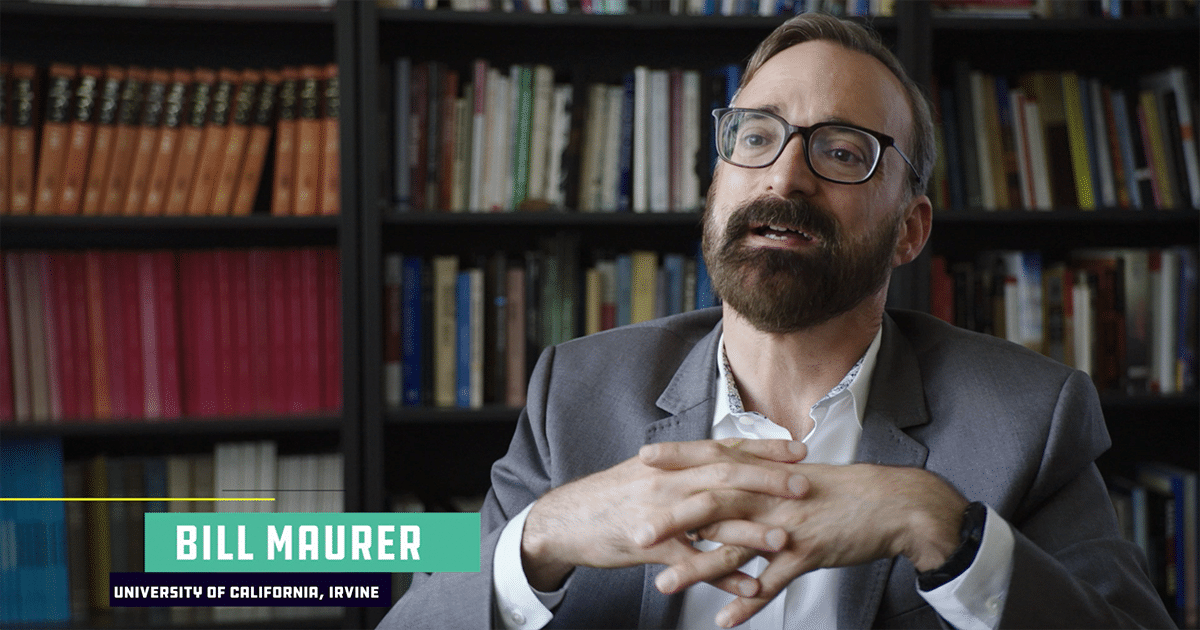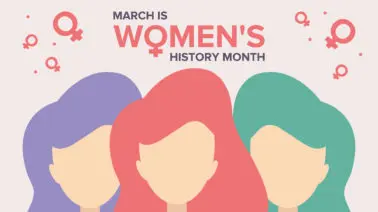In an extensive interview, we speak with Bill Maurer about money, trust, and the emergence of crypto and blockchain technologies.

In the process of developing and advancing the curriculum for Udacity’s Blockchain Developer Nanodegree program, and creating the new Built on Blockchain documentary series, we’ve been fortunate to collaborate with some of the most innovative thinkers in the field, and with new students now entering the classroom, the energy in and around this program is truly awe-inspiring.
One of the many visionary experts we’ve been able to speak with is Bill Maurer. He is the Dean of the School of Social Sciences, and a Professor of Anthropology, Law, and Criminology, at the University of California, Irvine. He is also the Director of the Institute for Money, Technology and Financial Inclusion, and his most recent books include “Paid: Tales of Dongles, Checks, and Other Money Stuff” and “How Would You Like to Pay?: How Technology Is Changing the Future of Money.”
We spoke with Bill recently about the history of currency, the ways currency represents responsibilities and obligations, the emergence of record-keeping, and the critical role of trust. We also explore the ways in which cryptocurrencies and blockchain technology are a logical next step in currency’s evolution, and what the future holds in terms of how these innovations and technologies will be applied.
Thank you for speaking with us Bill! Let’s begin with a question about the emergence of Bitcoin. What are you thoughts on why Bitcoin emerged when it did, and why it so rapidly had such a significant impact?
There are these moments in the history of the world, these times of great uncertainty, where you can see the reopening of the debate about money—what it is, what it does, what its politics are. In many ways, the initial developers and proponents of Bitcoin really inserted themselves into that debate in the immediate aftermath of the 2008 financial crisis. When they did, they referenced the history of money, and started thinking about how money could be made anew, separate from the centralized state structures that animate money now.
So if the rise of cryptocurrencies represents a new moment along a historical timeline, when does this history begin? Was there a seminal moment that launched the history of currency as we know it?
It’s difficult to identify single moments in history, because currency is a system, not a single “thing.” But you can think of some key moments. You can go all the way back to the beginnings of human settlement in the ancient Near East, in Mesopotamia. That’s a key moment where we started to see human beings dealing with the kinds of problems that arise when you have large numbers of people living in one place, organizing their lives around agriculture.
Agriculture is a big deal because you’re using the land as a kind of instrument—it’s a tool. It means these large settlements needed to plan everything around seasonal changes: When do I plant the grain? When do I harvest it? They have to start thinking ahead, to manage the food and items they need to survive. To do this, people started devising systems of inscribing relationships on clay tables, representing obligations—credits and debits—that people had to one another. As soon as you have that, you start to have something that looks a lot like money as we know it.
Does this then, represent the dawn of “representational” and “fiat” currencies, and is that what the first coins essentially were, and became?
The first coins were minted around 600 BC or so. One of the things that is really fascinating for me about these early coins is that you can really see how challenging it was for people to adopt this new technology. It was not at all obvious that if I had one of these coins and I handed it to you, I was thereby transferring value to you. It was a very alien concept.
What changed, and made “hard” currency trustworthy enough to function?
Everything had previously been written down. So with these coins, how did they know where they’ve been? How do they know they’re valid? What people did is they actually kind of endorsed them over to one another, by putting their mark on it, before handing it over. For the receiver, that’s value. It shows the stability of it as an object of value, because it’s passed through different people’s hands. For those early users, they didn’t see currency as inherently trustworthy. It couldn’t be trusted unless something had been written down, and handled in the familiar system of record keeping that emerged with those clay tablets.
Does this idea of record keeping—and its relationship to trust and value—represent the beginnings of distributed digital ledgers? Is that what we mean when we talk about cryptocurrencies and blockchain as being the next steps in a long evolution that stretches back to clay tablets?
A lot of the core development around Bitcoin for example, and the early Bitcoin community, had the idea that you could offload interpersonal trust, and trust in institutions, to the code. They trusted the math, because it’s something that can’t be altered by humans, and can’t be corrupted or changed.
That’s not unlike the ideas behind early clay ledgers. With those, they’d pretty ingeniously create the original, and then take some more clay, wrap it around, and make a sort of envelope, so that the content of it would be replicated on the inside. When it was time to settle the contract, they could crack it open and compare the two versions to settle any dispute about what was agreed. It’s really a very early instance of the idea behind things like Bitcoin—that there should be a replication of the ledger, held by multiple parties.
Built on Blockchain: Episode 1 – In Trust We Trust from Udacity
You mentioned “interpersonal trust” earlier; can we infer from this that there are other kinds of trust at play here? And what IS the role trust plays in all of this?
Since the very beginning, money in all its forms has been about trust.
But it can be about different kinds of trust. For certain kinds of objects that function as money, the kind of trust at issue is really interpersonal trust. In many small-scale societies, there are objects of value that are often worn, used as adornment, which indicate ongoing bonds of reciprocal credit and debit relationships and obligations.
If we’re talking about the early clay tablets, or our own contemporary banking infrastructure, we’re talking about institutional trust. We’re trusting that there will be an endurance of the technological systems and the political systems that wrap around them and ensure this money continues to function in the future.
So we have interpersonal trust, and institutional trust. Do they go hand in hand? And just how closely tied together ARE money and trust?
I’d actually say that money IS trust. It’s trust in institutions and trust in individuals. I think that it’s very important that we remember both sides of that—both the individual side and the institutional side. Without institutional endurance, money ceases to function. Without interpersonal belief, nobody will accept it. You need both sides of the coin for the thing to work.
Let’s come back to the concept of distributed ledgers again. We’ve talked about currency as a system, and addressed decentralization. We’ve also explored definitions of trust, and its foundational importance to the very idea of money. What happens next? What kind of future does blockchain lead us towards?
I would look toward the uses of the blockchain as a digital distributed ledger, and particularly, what you can get from a distributed ledger that you can’t get from current systems.
What you can get is a verifiable record of truth, that’s not under the control of any centralized authority, and which is relatively incorruptible.
It really opens up our horizons to new ways of imagining human relationships, and new ways of imagining economic relationships.
Do cryptocurrencies and blockchain have the potential to change our world for the better?
You could easily imagine applications for crypto and blockchain that really would benefit people; that would really create means of digital banking and financial inclusion for many people around the world for whom there isn’t access to channels of banking for money transfer or borrowing. You could imagine incredible benefit for people who are currently financially excluded.
There are concerns of course, as well. For those interested in ensuring positive outcomes, and who believe that these technologies have a social good component to them, is there work to be done?
Anytime you have a technological system that involves people and involves money, there is the potential for abuse. We’re starting to see calls for platform accountability and for audits of the algorithms that determine new kinds of risk scores. It’s only a matter of time before that comes into the crypto and blockchain space. I think that people who are in that space now should be thinking about those questions before problems arise, and before they have to pull back experiments they want to unleash.
Thank you so much for your insights Bill! We’re so eager to share your thoughts with Udacity’s students and community. The first students are in the Blockchain Developer program now, and they’re already displaying incredible curiosity and passion for the issues you’ve raised here today. We’re eager to see what contributions they’ll make as they graduate and begin to enter the field, and we look forward to continuing our conversations with you as we learn more about what the future holds, and the ways in which this new generation of talent will shape it. Until then, thank you again!
